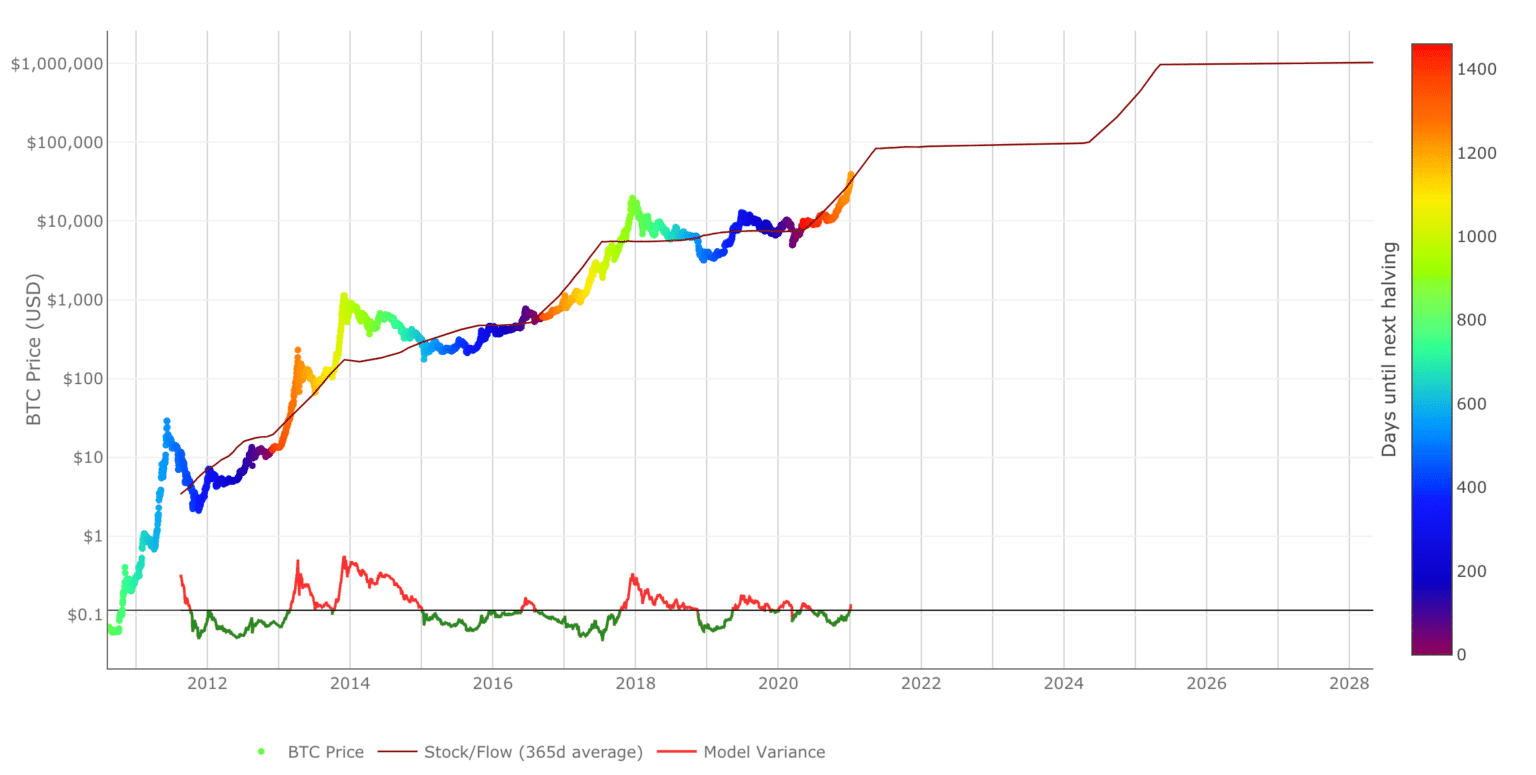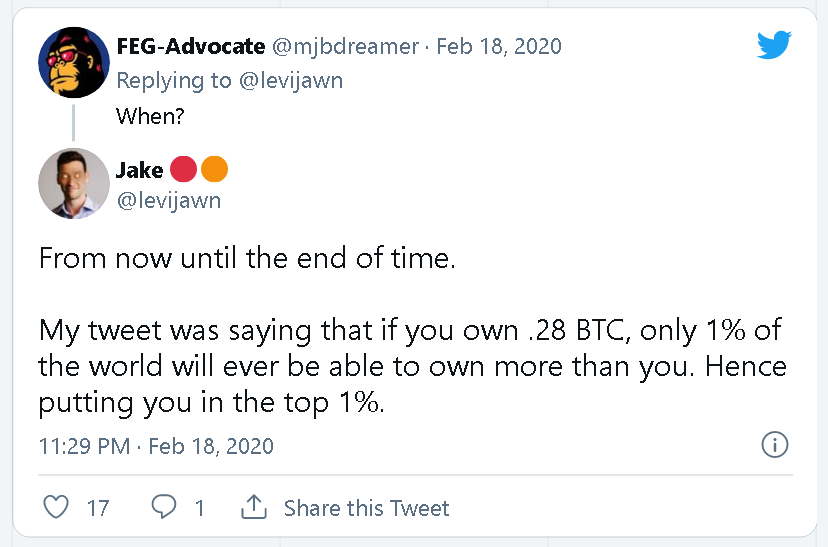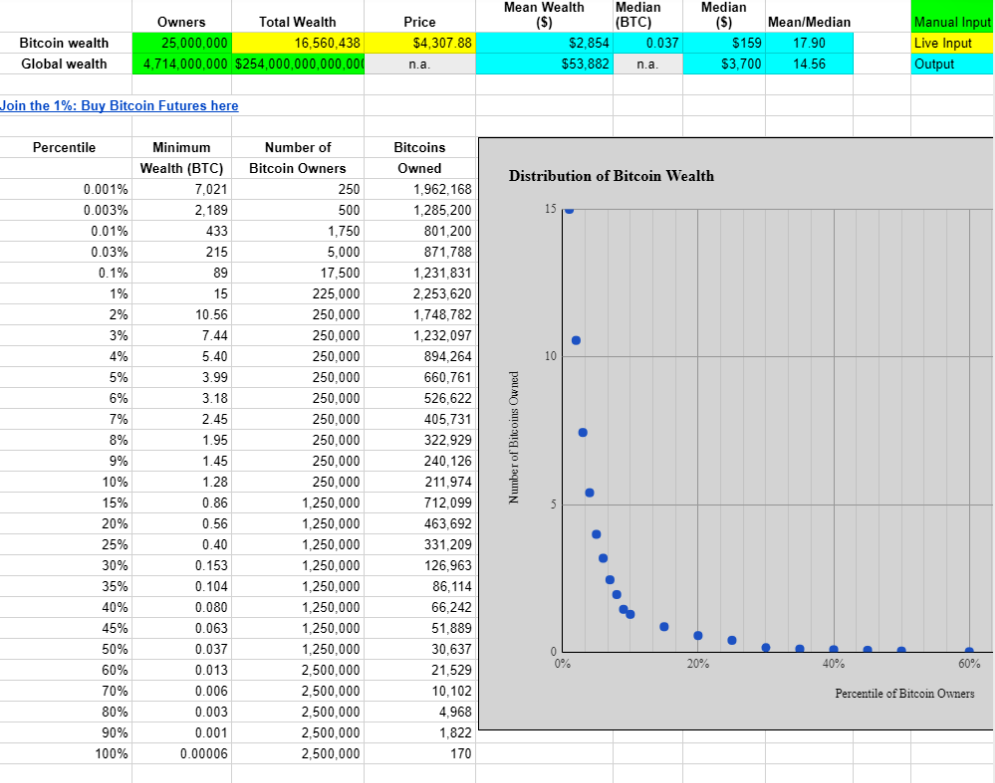How much Bitcoin should I buy?

To witness the likes of Elon Musk ramble, day after day, about cryptocurrency but more specifically about Bitcoin, and companies such as MicroStrategy, Tesla, Galaxy Digital Holdings and Marathon Patent Group announce publicly that they are moving their reserves into Bitcoin should be an electroshock to anyone not invested in the crypto markets. One cannot help but think, looking at models such as the Stock to Flow Ratio: “What if I was missing out on something big, on the opportunity of a lifetime? Can I realistically afford to miss out?”

There will only ever be 21 million bitcoins in circulation.
At the time of writing 18,740,368 BTC have been mined and 2,259,631 BTC are left to be mined. 89% of all bitcoins have been issued as rewards for validating transactions and generating new blocks. It is clear that retail, corporate and institutional demand for Bitcoin is increasing. Just take a look at the holdings of the corporations mentioned above. Microstrategy is pursuing an aggressive purchasing agenda and now owns 92 000 Bitcoins. Tesla comes second in terms of BTC holdings with 43 000, Galaxy Digital is third with 16 000. And who knows which corporations might be amassing bitcoin without disclosing it to the public?
All this being said, the question should not be if or when you should invest in Bitcoin. Corporations and legendary investors known for their raw insight and returns are jumping in now, as they know market dynamics will slowly but surely price investors out of this asset. The question should rather be: how much should one’s exposure be to this crypto asset.
What Financial Advisors and Experts Think
Asking this question to financial advisors, you will get a multitude of answers.
Tori Dunlap, an expert who went viral on Tik Tok after revealing how she would retire with 6 million dollars, does not recommend more than a 5% allocation to assets like crypto.
Vrishin Subramaniam, founder and financial planner at CapitalWe, states that “2 to 3% is usually what we see for most clients who are not tracking crypto markets more than once a week.”
Theresa Morrison, from the Beckett collective, advises her clients to allocate between 1 and 4% of their portfolio to Bitcoin:
“Crypto-aware clients sit in two camps: crypto-savvy or crypto-curious. For the crypto-curious, a 1% diversification can be a way to explore crypto. Once it’s over 5%, you start to see the volatility swings affect the rest of the traditional portfolio, and most people don’t want that.”
Dan Herron, a CPA at Elemental Wealth Advisors, recommends a conservative 1% exposure to Bitcoin.
And then there are those who recommend going all out (“YOLO”), such as this cryptomaniaks contributor who suggests that you should invest somewhere around 5% to 30% of your investment capital. The writer admits that his personal allocation ranges from 15% to 50%, and discloses in the same sentence that he has a background in gambling and that he feels “very comfortable” losing money!
Every financial advisor has his own outlook on the digital asset, and you will get a wide range of answers that will probably not help you decide how much you should actually be investing.
Knowledge of Yourself is of the Essence
Know Yourself. The best way to determine how much you should allocate into Bitcoin is to turn your gaze inwards and weigh on personal parameters such as: 1. Risk Tolerance, 2. Risk Capacity (risk tolerance and capacity are not the same thing!), 3. your investment goals, 4. your comfort level with the Bitcoin Markets, 5. your Time Horizon and 6. your Bankroll.
Risk Tolerance refers to the degree of variability in returns that an individual is willing to withstand. You should know yourself well enough to predict if Bitcoin’s large swings will make you uncomfortable or not. Risk Tolerance is often associated with an investor’s age; in general, the younger an investor is, the more risk he is willing to take.
Risk Capacity is the amount of Risk that you must take on in order to reach your investment goals.
Investment goals: You might want to retire early, or just to amass enough money for a long vacation or renovations. Your investment goals will determine how much risk you are willing to take on and how much money you are willing to allocate to Bitcoin. Your investment goals should be S.M.A.R.T: Specific, Measurable, Achievable, Relevant and Time-Based
Comfort Level: Are you brand new to Crypto? If you are, you might want to keep your allocation in the low single digits. The Bitcoin markets can be vicious, especially for new traders who attempt to use leverage in order to achieve their goals quickly. If you are not new to the crypto sector and have been watching and trading sporadically with a certain degree of success, then you should increase your allocation, to match your understanding of the markets.
Time Horizon: How long are you willing to stay in the markets? How much time are you willing to give yourself to achieve your financial goals? A short Time Horizon and lofty financial goals will require one to take on more risk and allocate more resources to Bitcoin. A longer Time Horizon gives you the opportunity to recoup any potential losses and makes you therefore more resilient and tolerant of higher risks.
Bankroll: Your bankroll refers to the amount that you are willing to lose.
The words of a financial advisor with a long experience in the traditional and crypto markets carry a lot of weight, but ultimately your decision should be a direct product of an intimate knowledge of these personal parameters.
How much Bitcoin do you need
to be part of the top 1%?
Perhaps your only investment goal is to be part of the top 1% of Bitcoin “hodlers”. In this case, how much bitcoin would you need exactly?
In 2018, Jake Levison, an analyst for the Blockworks group, famously tweeted that you only need 0.28 BTC to be in the top 1% of holders.
“If you own 0.28 BTC, you’re statistically guaranteed to be in the richest 1% of the world in BTC terms.”

Google Product director Steve Lee expanded on this 0.28 figure: he explained in a tweet that Bitcoin’s maximum supply, 21 million, divided by one percent of the world’s population in 2018 (7.5 billion people), amounts to 0.28.
But these very optimistic estimates from Steve Lee and Jake Levison might be too low, since research conducted by Blocklink suggests that 15 BTC is the minimum needed to join the top 1% of Bitcoin holders. Blocklink comes to this conclusion by assuming that no bitcoins have been lost, and by disregarding wallet and address data.

Final Thoughts
When trying to determine how much resources you should allocate to Bitcoin, it is good practice to listen to the words of financial advisors, however the decision should rest on an intimate knowledge of yourself, and of personal parameters such as your Risk Tolerance and Time Horizon. While it is advised for newcomers to begin with a low allocation to control risk, individuals comfortable with Bitcoin should increase this allocation, especially if they ardently desire to retire as members of the elusive “1% Club”.

